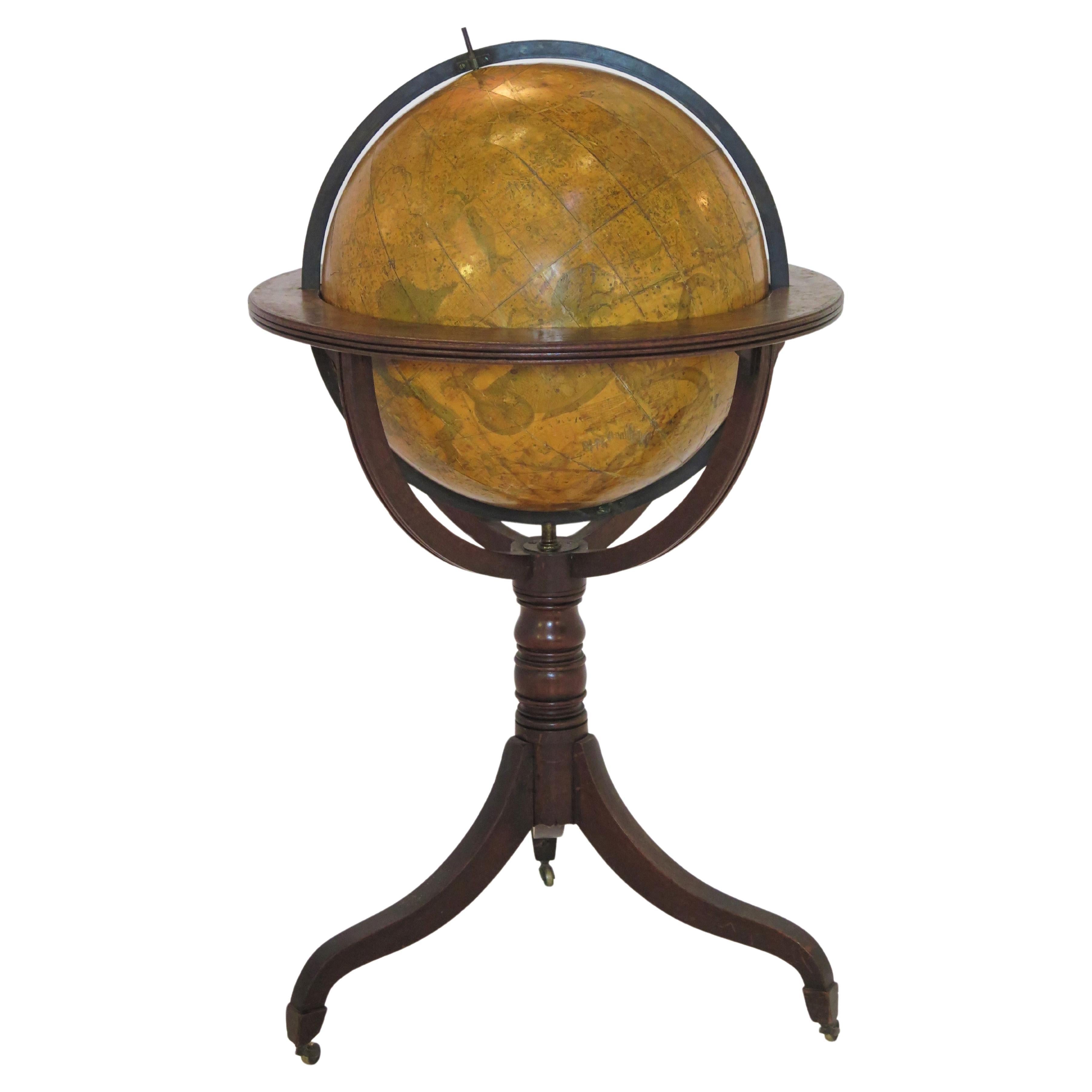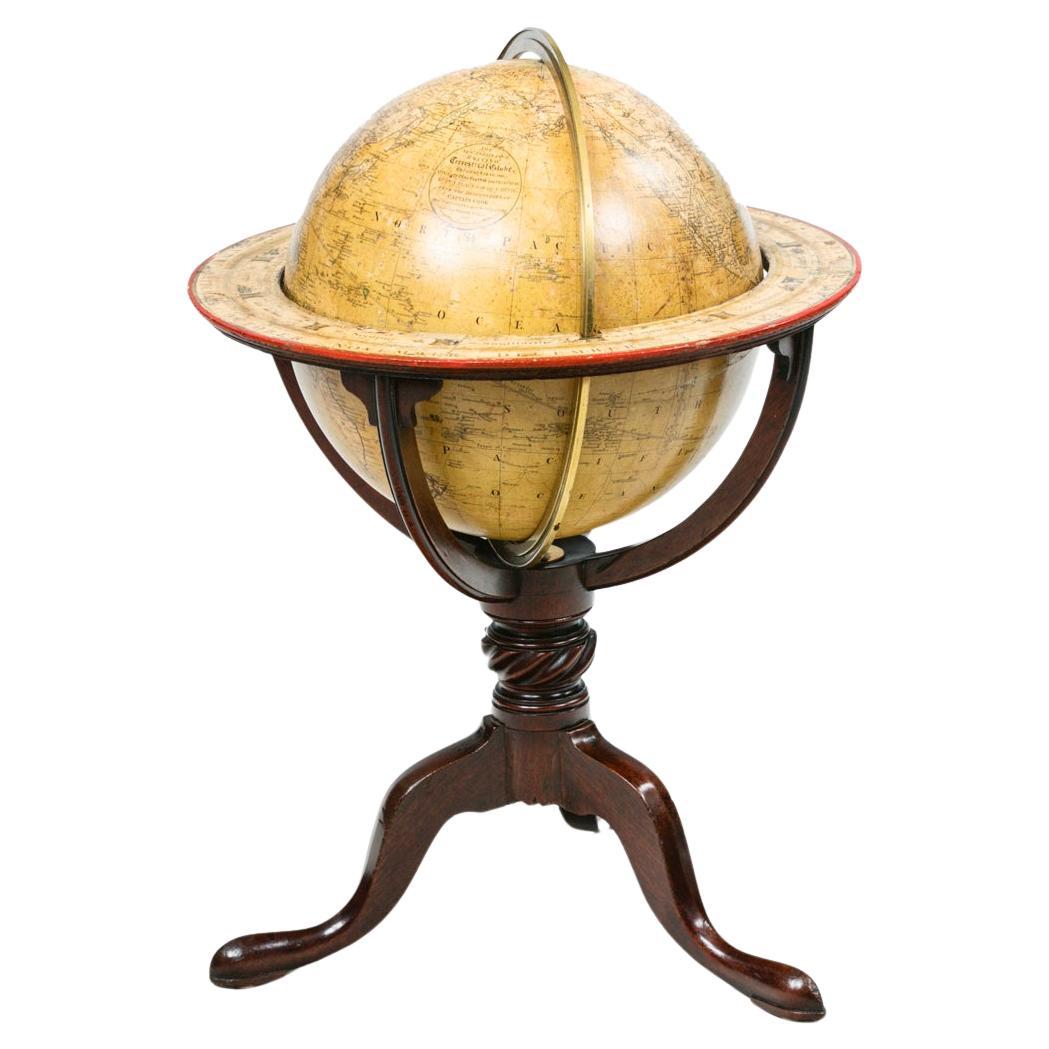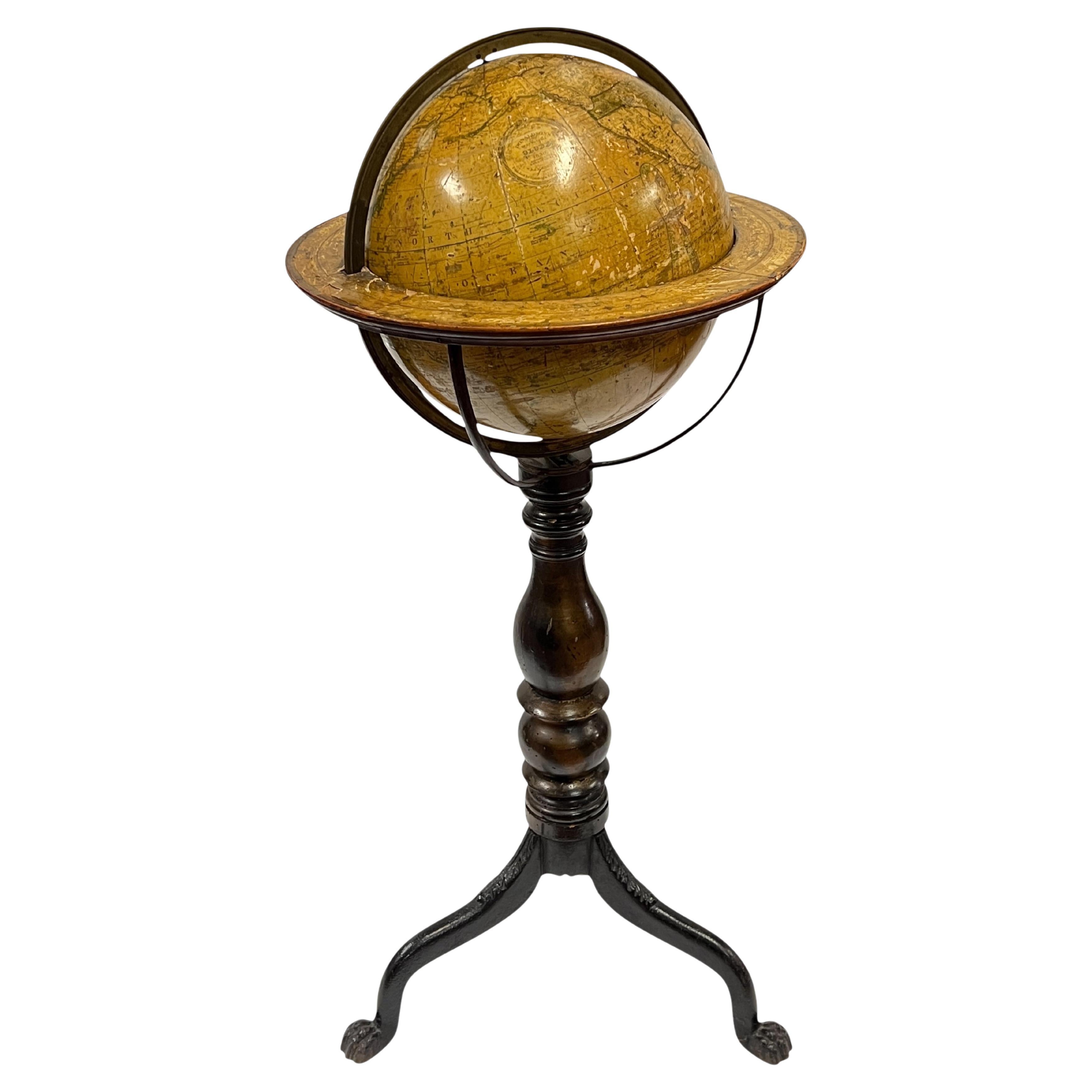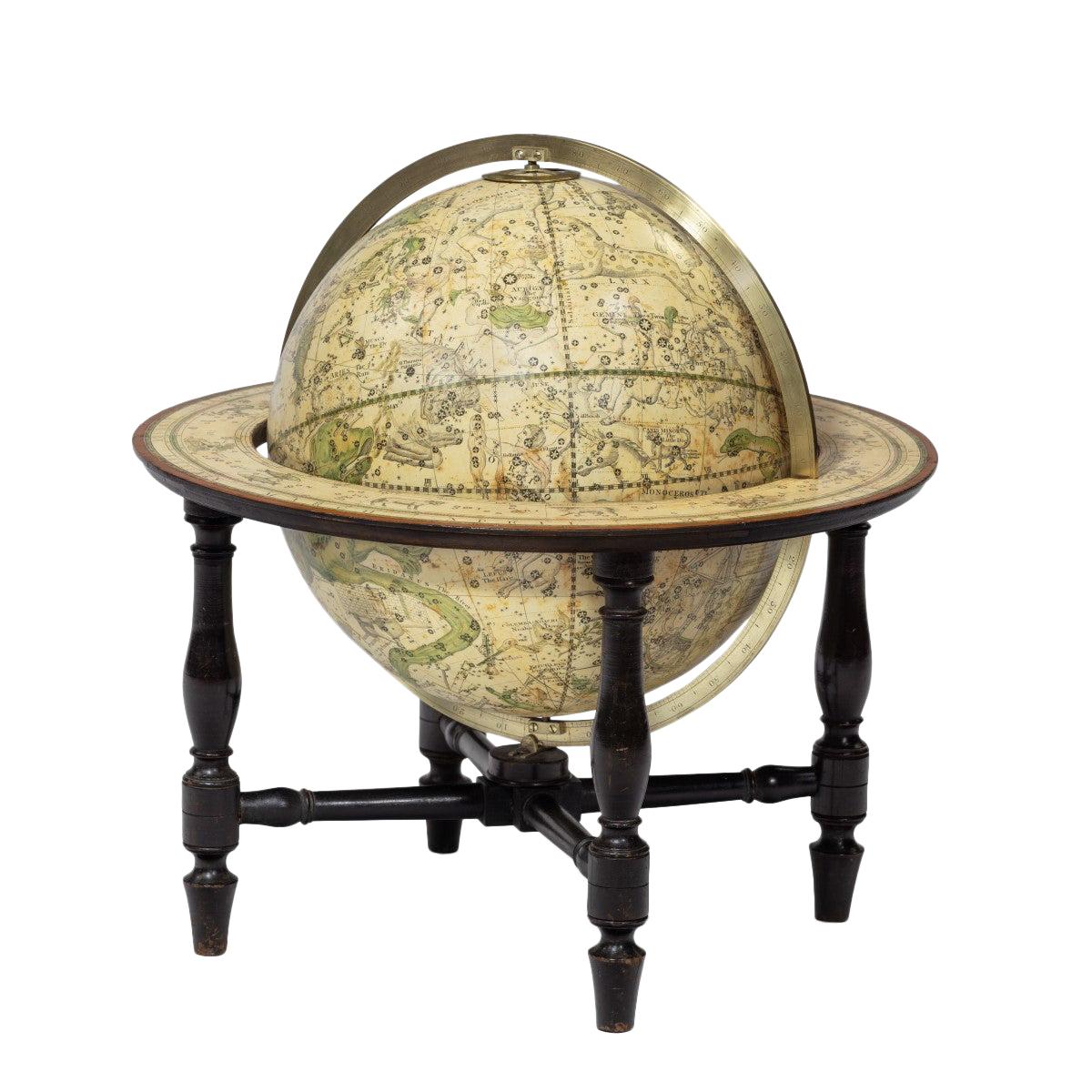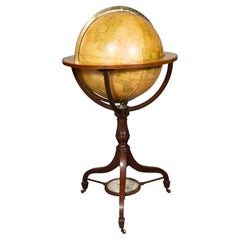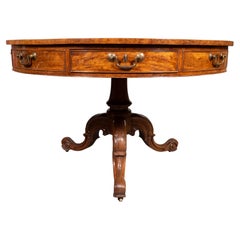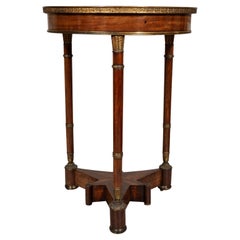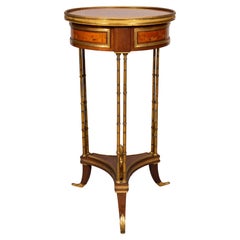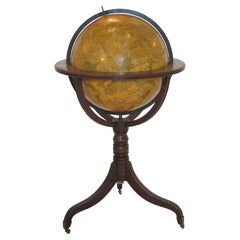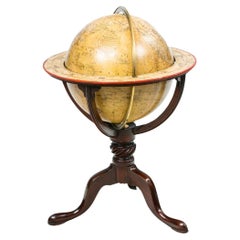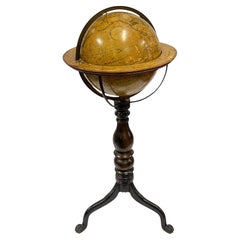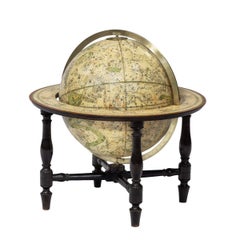Items Similar to English Celestrial Table Globe By R.B Bate, London
Want more images or videos?
Request additional images or videos from the seller
1 of 15
English Celestrial Table Globe By R.B Bate, London
$3,850
£2,924.39
€3,369.89
CA$5,421.75
A$6,010.82
CHF 3,158.92
MX$73,562.52
NOK 39,451.67
SEK 37,029.34
DKK 25,154.12
About the Item
!2 inch celestrial globe "The New Twelve Inch British Celestrial Globe". With a mahogany tripod base.
- Dimensions:Height: 26 in (66.04 cm)Diameter: 17 in (43.18 cm)
- Style:Regency (Of the Period)
- Materials and Techniques:
- Place of Origin:
- Period:
- Date of Manufacture:1825
- Condition:Repaired: Patching to globe itself. Losses and fills etc. More decorative than functional.
- Seller Location:Essex, MA
- Reference Number:1stDibs: LU838140877782
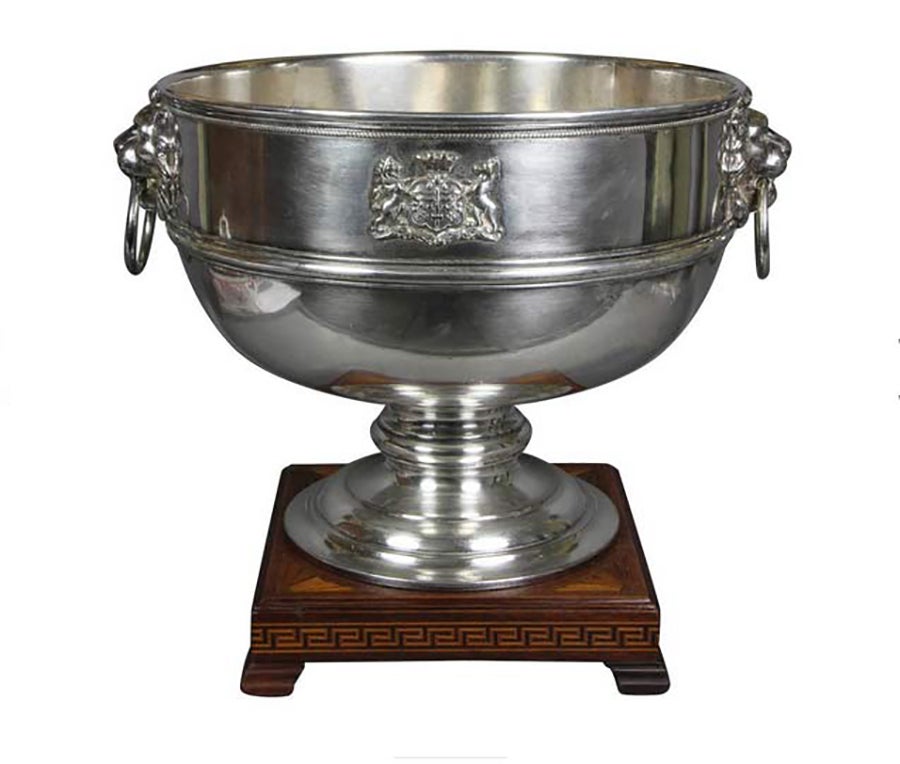
About the Seller
4.9
Gold Seller
Premium sellers maintaining a 4.3+ rating and 24-hour response times
Established in 2007
1stDibs seller since 2007
940 sales on 1stDibs
Typical response time: 2 hours
Associations
The Art and Antique Dealers League of America
- ShippingRetrieving quote...Shipping from: Essex, MA
- Return Policy
Authenticity Guarantee
In the unlikely event there’s an issue with an item’s authenticity, contact us within 1 year for a full refund. DetailsMoney-Back Guarantee
If your item is not as described, is damaged in transit, or does not arrive, contact us within 7 days for a full refund. Details24-Hour Cancellation
You have a 24-hour grace period in which to reconsider your purchase, with no questions asked.Vetted Professional Sellers
Our world-class sellers must adhere to strict standards for service and quality, maintaining the integrity of our listings.Price-Match Guarantee
If you find that a seller listed the same item for a lower price elsewhere, we’ll match it.Trusted Global Delivery
Our best-in-class carrier network provides specialized shipping options worldwide, including custom delivery.More From This Seller
View AllGeorge III Celestial Floor Globe By J&W Cary
Located in Essex, MA
Carys New and Improved Celestial globe. Dated 1799. Cary was one of Englands leading globe makers of the late 18th century. Set in a mahogany stand with three saber legs and joined b...
Category
Antique Late 18th Century English George III Globes
Materials
Brass
Early Victorian Mahogany Drum Table
Located in Essex, MA
With circular top with inset tooled green leather and banded border over drawers with bail handles. The carved base with turned support and three carved cabriole legs and ending on s...
Category
Antique 1830s English Early Victorian Center Tables
Materials
Brass
Russian Neoclassical Mahogany And Bronze Mounted Table
Located in Essex, MA
With circular top with cast gilt bronze border with three columnar supports headed by gilt bronze clustered arrow quills. Lower star form shelf with compass inlay. Casters.
Category
Antique 1810s European Neoclassical Tables
Materials
Bronze
Fine George III Style Satinwood and Rosewood Table
Located in Essex, MA
Circular top with central floral spray and rosewood banding and bronze edge, the frieze with a drawer with hidden button to open. The whole frieze with floral inlays, raised on bronz...
Category
Antique 1790s English George III Tables
Materials
Bronze
$6,800 / item
Louis XVI Style Satinwood Occasional Table
Located in Essex, MA
Circular top with brass gallery over a larger conforming brass gallery shelf, on a shaped support and a tripod base.
Category
Antique 1790s European Louis XVI Tables
Materials
Satinwood
Regency Rosewood and Brass Inlaid Center Table
Located in Essex, MA
With a circular hinged top with brass inlaid border supported on a triangular support ending on a conforming base with brass stringing and raised on plain Greek form feet. Casters.
Category
Antique 1830s English Regency Center Tables
Materials
Brass
You May Also Like
A George III Eighteen Inch Celestial Globe by W. and T.M. Bardin
By T. M. Bardin
Located in Dallas, TX
A George III eighteen inch celestial globe by W. and T.M. Bardin, dated 1800, in a mahogany tripod floor stand having graceful curved legs with brass caps and castors. the cartouche ...
Category
Antique Early 19th Century George III Globes
Materials
Mahogany
18th Century New British Terrestrial Globe by W&S Jones, dated to 1800
Located in Dublin 8, IE
18th Century twelve inch New British Terrestrial Globe by W&S Jones, dated to 1800. With description reading ‘Representing the Accurate Positions of the Principal Known Places of the...
Category
Antique 18th Century English Globes
Materials
Brass
Antique 19th Century British Globe on Stand
Located in New York, NY
Antique (19th century) globe on stand issued in 1836 by Donaldson's of Edinburgh, Scotland, measuring 37 inches tall and 16 inches across.
Category
Antique 18th Century Scottish Georgian Globes
Materials
Wood
Celestial Table Globe by Harris and Son
Located in Lymington, Hampshire
A 12 inch celestial table globe by Harris and Son, the horizon ring, with the original papers, set on four turned mahogany legs, the label statin...
Category
Antique 1810s English Globes
Materials
Mahogany
Fine Rare Regency Table-Top Celestial 12” Globe by J & W Cary ca. 1816
By Cary
Located in Shippensburg, PA
A FINE REGENCY TABLE-TOP CELESTIAL 12" GLOBE ON MAHOGANY TRIPODAL STAND
John and William Cary, 181 Strand, London circa 1816
24 5/8" H x 15" W x 15" D
12" globe diameter
A fine Re...
Category
Antique 19th Century British Regency Globes
Materials
Brass
19th C. Terrestrial Globe on Stand for H.B. Nims After Copley
Located in Bridgeport, CT
Manufactured for H.B. Nims & Co., Troy New York, last quarter 19th c. After the original engravings by Charles Copley done in 1852.
Printed paper on wood with brass/ bronze meridian ring and a flat circular printed center horizon ring on wood labeled with the months of the year with notes. Mounted on a fine leafy iron baluster...
Category
Antique Late 19th Century American Victorian Maps
Materials
Bronze, Iron
